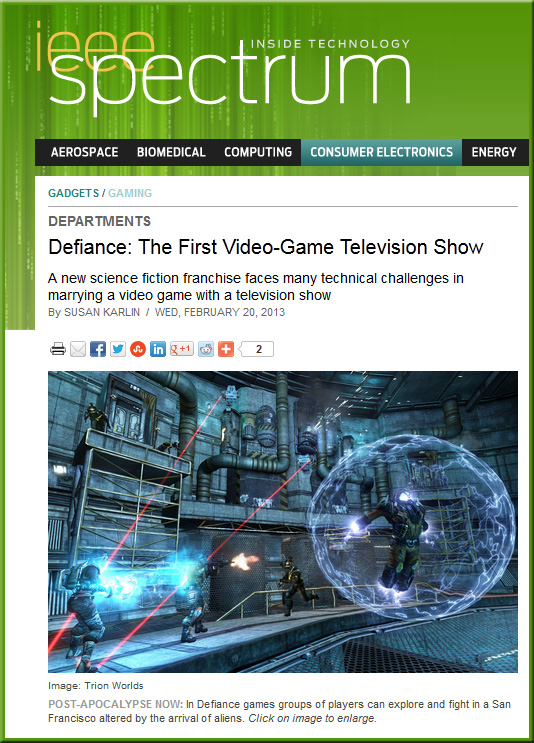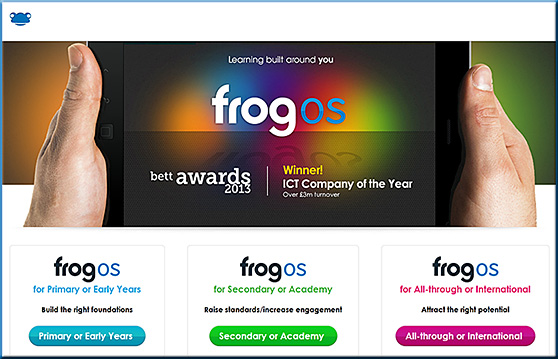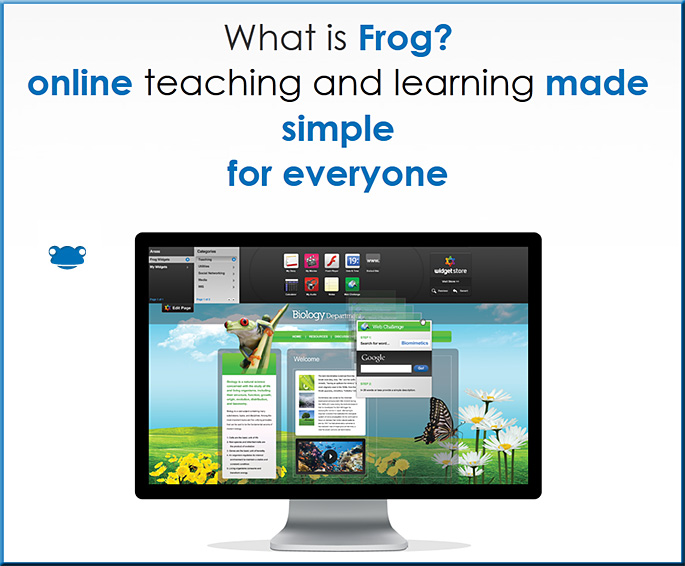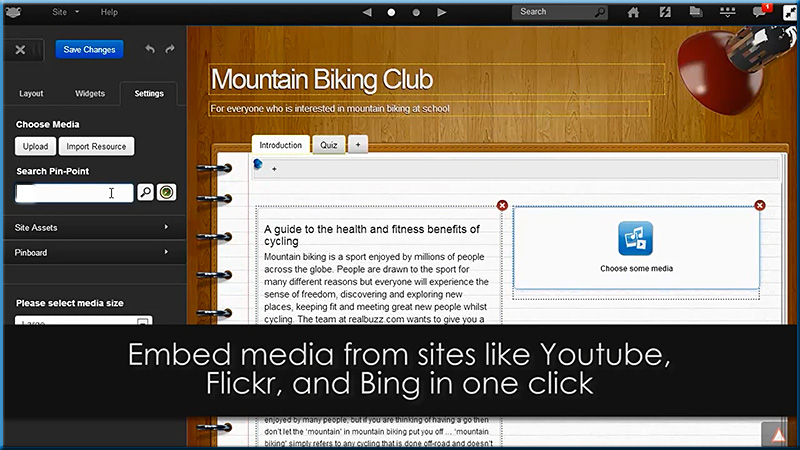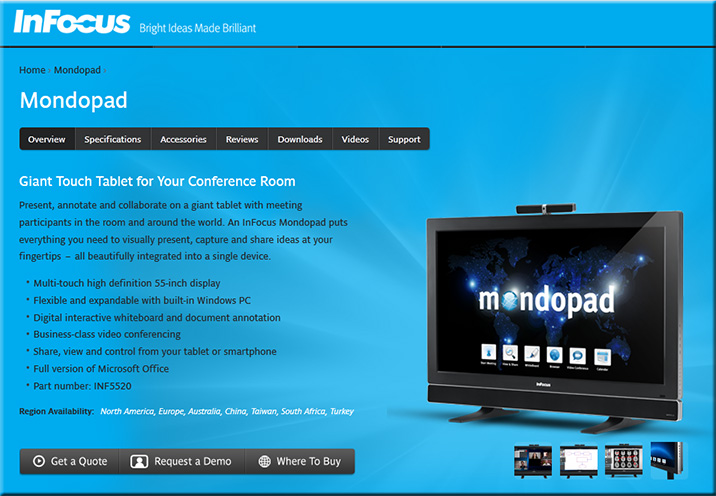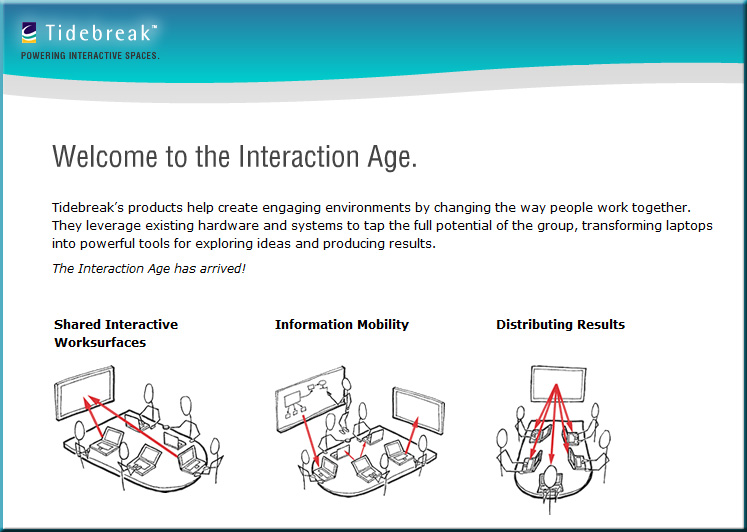From DSC:
Lynda.com, an excellent resource, now uses digital playlists.
Here’s an idea. How about, in the future, students will be able to run through a series of digital playlists:
- Focusing on a particular topic and/or a course from:
- A particular college or university
- A consortium of colleges and universities
- A group of approved subject matter experts
If and when a person gets stumped — and the artificial intelligence has reached the end of its usefulness — provide a way for that student to connect with a TA, a professor, the subject matter expert, and/or with other students.
A history of media streaming and the future of connected TV — from guardian.co.uk by Alex Zambelli
We’re close to broadly available HD streaming which could trigger mass adoption of connected TV.
.
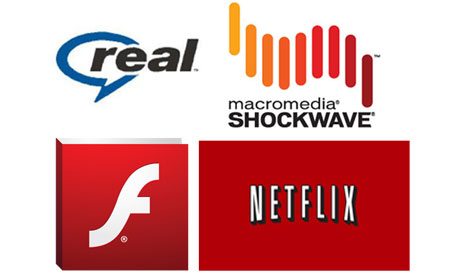
A precursor to…
![The Living [Class] Room -- by Daniel Christian -- July 2012 -- a second device used in conjunction with a Smart/Connected TV](http://danielschristian.com/learning-ecosystems/wp-content/uploads/2012/07/The-Living-Class-Room-Daniel-S-Christian-July-2012.jpg)
The question of why (not) eLearning on iPads or tablets? — from upsidelearning.com by Amit Garg
Excerpt:
2012 saw the re-emergence of ‘Mobile learning’ or ‘mLearning’ as “new” (ok, not really new) buzzwords in L&D and Training circles around the world. But largely in the wrong context! Mobile Learning is being loosely attributed to any learning activity that is not location bound, which is very surprising! And even more surprising is, more often than not, it is not even referring to mLearning at all! But to things like, making an LMS available on an USB drive so you can track courses while on a plane! Certainly not mobile learning in my opinion.
I believe ‘real’ mobile learning is much more than just learning on a mobile device. I also believe that ”tablet” learning is neither mobile nor eLearning, but actually occupies a position between mLearning and eLearning. So let me lay out my argument for why I believe this!
Also see Amit’s presentation at LT13uk — the full presentation is available here:
http://www.slideshare.net/UpsideLearning/designing-elearning-for-ipads
.
Here’s how it’ll feel to wear Google Glass –from mashable.com by Pete Pachal
New Google Glass UI video shows off search, camera, and voice translation features — from theverge.com by Amar Toor
Google Glass in the classroom — from Andrew Barras at educationstormfront.wordpress.com
Excerpt:
Did you notice it didn’t have anything about being in a classroom? What would it look like if it did? Tie together facial recognition, speech to text transcription, and IBM’s Watson (or Google’s version of it, Google Now) and what do you get?
Google Glass augmented reality project now open to regular people — from readwrite.com by Dan Rowinski
Also see:
- Stanfords VR Lab offers wild glimpse of the future — from huffingtonpost.com Steve Rosenbaum
From DSC:
First of, when I saw the article:
Lynda.com acquires online video training rival Video2brain to boost its international expansion — from thenextweb.com
…it reminded me of taking a class with Lynda Weinman years ago out at SFSU’s Multimedia Studies Program. She relayed a lot of very valuable information in a short time. She knows how to explain things well — using helpful techniques and understandable vocabulary. She struck me as not only a creative person with a heart for teaching and learning, but she surrounds herself with people who also can effectively teach others. Our institution gives a thumbs up to this solid resource and I wish Lynda & all of the other entrepreneurs at Lynda.com all the best.
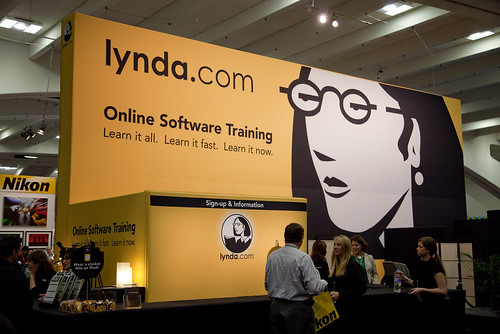
From DSC:
Below are some reflections after seeing these items:
- IBM’s Watson is better at diagnosing cancer than human doctors — from wired.co.uk by Ian Steadman
.
- Watson is now commercially available, set to help doctors treat cancer — from singularityhub.com by Peter Murray
.
- Watson supercomputer goes to college, Revenge Of The Nerds style antics imminent — not an exemplary article from geekosystem.com, but the underlying topic has enormous implications
Excerpt:
…the team developing Watson is sending the computer to college, where it will bone up on coursework in English and math.
…
While the original Watson will be staying put at the IBM research center it calls home, the hardware to run the program is being installed at the Rensselaer Polytechnic Institute in upstate New York, where researchers and grad students will be spend the next three years teaching Watson all they can while also hoping to learn more about how the software learns and make it more effective.
.

From DSC:
The current set of MOOCs are very powerful, but, like a bush that needs pruning, they can become unwieldy and hard to control. Not only do the current set of MOOCs help me to see the importance of instructional design, but trying to drink from the firehose often presents problems (i.e. wading through thousands of tweets, hundreds of blog posts, etc.). How can we still provide openness and yet provide people with better methods/tools for setting their desired level of drinking from this firehose? Tags are helpful, but for most people, they are not doing enough to filter/curate the content at this point.
Enter the technologies being developed in IBM’s Watson, Apple’s SIRI, or in Knewton’s product lines. End-user controllable setting might include:
- Full throttle — like current form of MOOCs — thousands of tweets, hundreds of blog posts, etc.
- IBM Watson-enabled curation/filtering only — each individual adjusts how many items they want to see in the various portions of the interface (see above); these settings control how many items and/or streams of content get presented to you
The ideas involving learning agents, artificial intelligence, intelligent tutoring, intelligent systems and more seem to get roped in here…hmm…just thinking out loud and sharing potentially-useful ideas.
YouTube another MOOP (Massive Open Online Pedagogy) Learning will not be televised, it will be digitised. — from Donald Clark
and/or
More pedagogic change in 10 years than last 1000 years: Donald Clark at TEDxGlasgow
Some notes I took:
Lecture capture:
- It’s dumb not to record lectures
- Have to give more than 1 chance to hear a piece of content
- Repeated access to content matters
Khan Academy:
- 2800 videos;110 million viewed on YouTube
- Short chunks of information
- Flipped classroom
Sebastian Thrun
- Flipped classroom
Social media
- Scalable
- Accessible
- Has already changed the world of education forever
FrogOS video walkthrough – The future of learning technology — from frogtrade
Excerpt:
Well here it is, two years in the making, 1000’s of man hours and finally we can proudly show you the new software we have been showcasing at Bett 2013.
What better way to whet your appetites than to give you a simple video walkthrough that shows you just how easy it is to create a site in FrogOS.
.
.
.
From DSC — with a special thanks to Mr. Michael Haan, Technology Integration Specialist at Calvin College, for this resource
Now we’re talking! The Mondopad from InFocus is starting to morph into what I thought the “chalkboard of the future” might look like. Now I’d like to see:
- An entire wall offer this sort of functionality
- More content from publishers flow into this sort of setup — i.e the kind of content that leverages the interactivity and flexibility that these sorts of technologies now make available
- The ability of students and employees to transmit their content up to these devices/walls — have it be scanned for viruses — and then moved into a viewing area (with an option for folks to download that file if they want to)
Key features:
- Multi-touch high definition 55 inch display (From DSC: A 70″ version is also available I believe)
- Flexible and expandable with built-in Windows PC
- Digital interactive whiteboard and document annotation
- Business-class video conferencing
- Share, view and control from your tablet or smartphone
- Full copy of Microsoft® Office ensures file compatibility
Also see the information out at Precision Data Products:
Games for a Digital Age: K-12 Market Map and Investment Analysis — from joanganzcooneycenter.org by John Richards, Leslie Stebbins and Kurt Moellering
January 28, 2013











